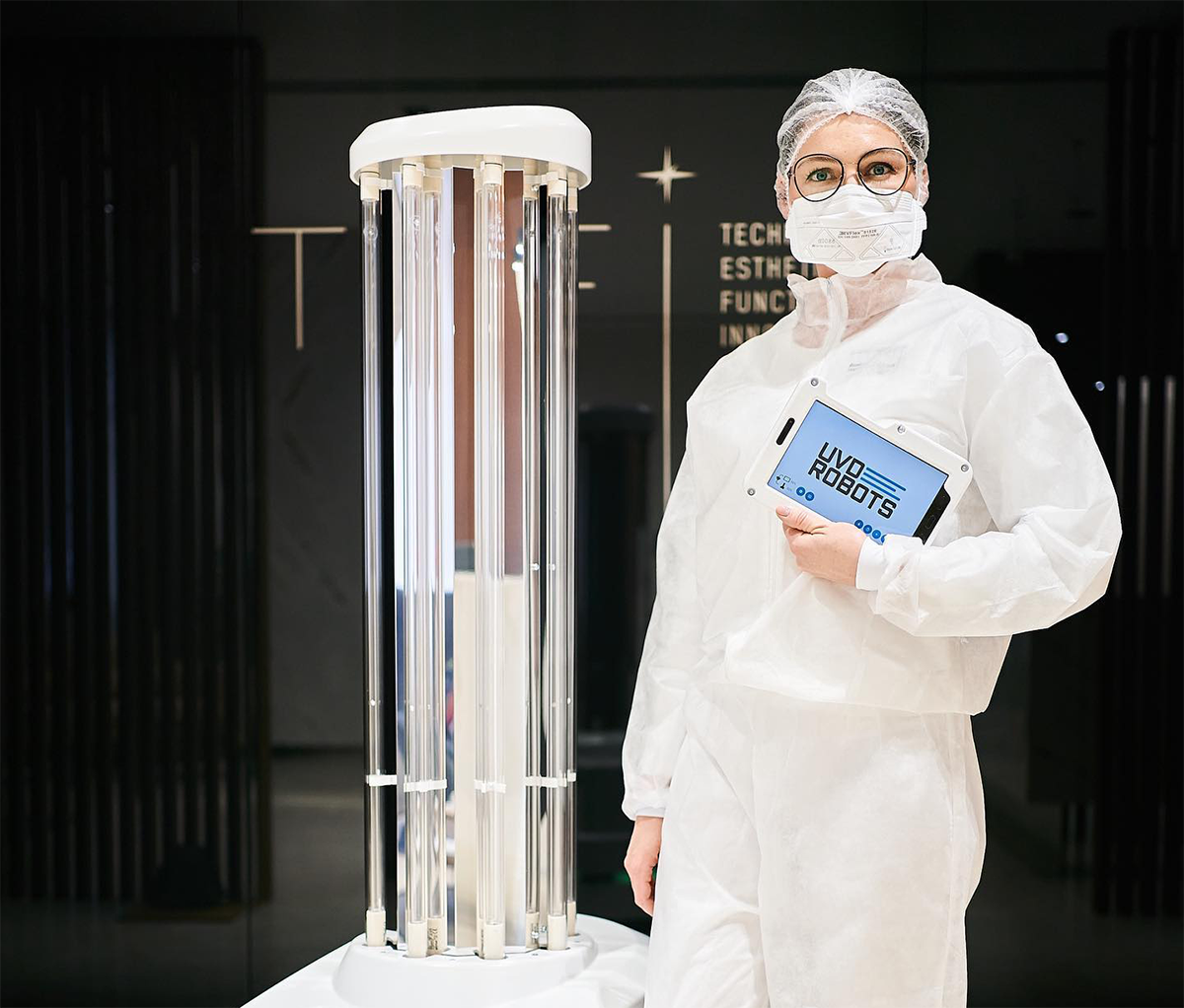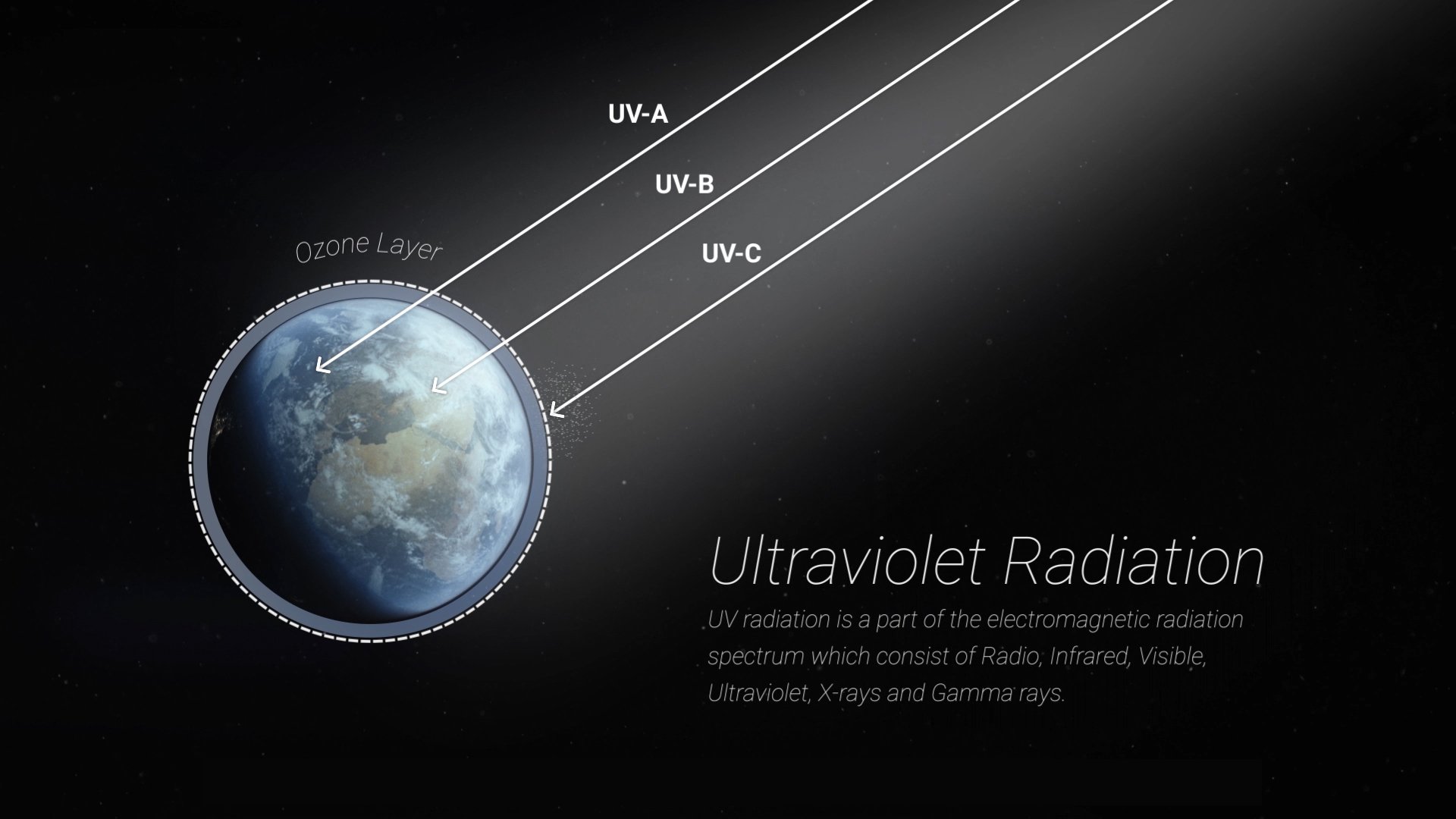Title
Content
Title
Content

“What is UV-C light and how does it work?” We'd like to show you! The complex science is simple once you understand light.
As you can see in the image below, the sun emits radiation across the electromagnetic spectrum1. Earth’s atmosphere filters sunlight; and though long-wave (UV-A)/middle-wave (UV-B) ultraviolet light reaches the surface of the planet, short-wave (UV-C) ultraviolet light gets absorbed.

UV-C light waves are comprised of photons, or particles of light. They are the most energetic of the optical electromagnetic spectrum (comprised of UV, visible, and infrared light) and are, therefore, the most photochemically active2. The peak germicidal effects of UV-C irradiation occur at wavelengths of 254 nm3.
The short answer is yes.
UV-C photons cause irreversible damage to the DNA and RNA of many microorganisms. When UV-C light is applied to an area, it can kill living bacteria and inactivate viruses. UV-C light interacts DNA and RNA component structures, breaking cells down on a molecular level. UV-C germicidal irradiation peaks at a wavelength of 254 nm.
So what does this mean on a practical level? Well, that using UV-C light will kill germs and bacteria - ensuring higher levels of disinfection.